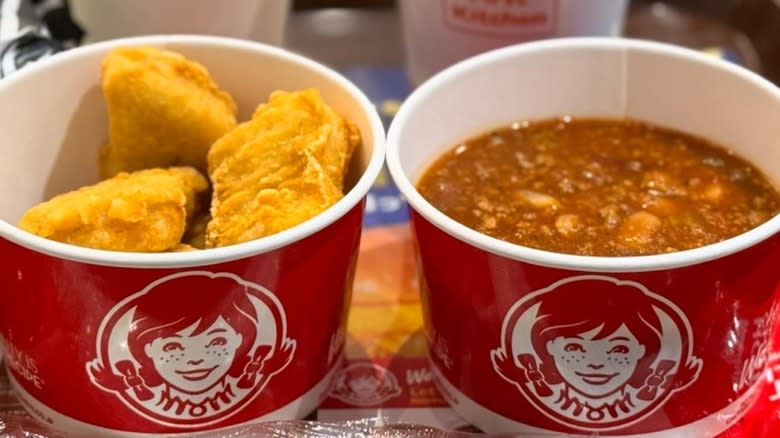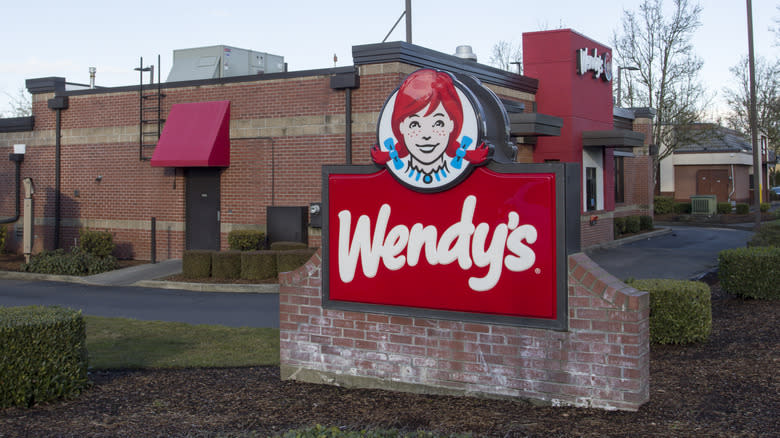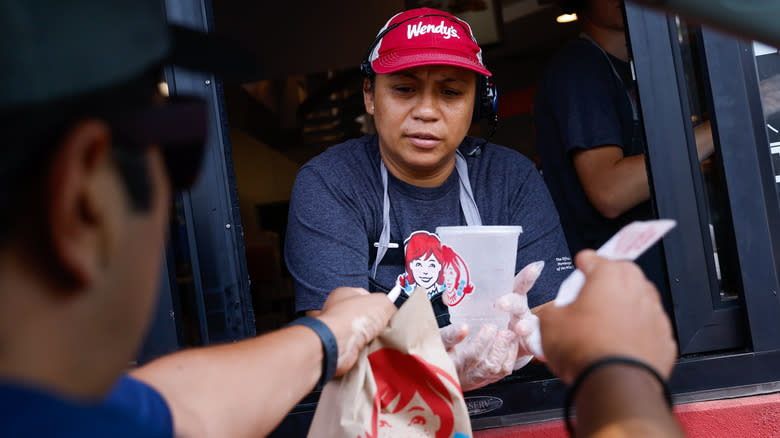The Wendy's Chili Fact You Need To Know Before Ordering

When it comes to fast food chains, Wendy's is notable for using fresh ground beef patties in its burgers. While that might improve the quality of the restaurant's menu items (such as Wendy's satisfying Pretzel Baconator), it does pose a challenge when it comes to longevity, as fresh burgers will naturally have a shorter lifespan than frozen ones. Accordingly, Wendy's developed an off-putting solution: Incorporate old, unsold burger patties into the restaurant's chili.
Find this fact a little too disgusting to be true? As reported by Entrepreneur, the practice for making Wendy's chili was demonstrated by a staff member at the chain. They posted a video on social media showing the employee combining unsold burger patties with water, crushing them, and then placing them in a bag for storage in the freezer. And in case you think this was just a single fast-food worker going rogue, an official presentation from Wendy's exhibits the same process (unfortunately, neither video is currently available).
Read more: The Ultimate Ranking Of American Fast Food Restaurants
Wendy's Remains Tight-Lipped On Its Holding Time For Burgers

While the fast-food restaurant is open about its use of old burgers in its chili recipe, Wendy's is reluctant to reveal just how long beef can sit out before it's no longer suitable for burgers. Daily Meal reached out to a Wendy's location and found that cooked burgers under heat lamps are subject to a timer. Once that timer goes off, the burger can no longer be sold as-is (and presumably gets recycled into chili). However, Wendy's staff claimed that they were not able to provide the exact time that burgers can sit out before they get pulled from the line-up.
In the restaurant business, holding time refers to how long hot foods are subject to warming devices (such as heat lamps). In terms of quality, leaving food out for over four hours is likely to greatly compromise the flavor and texture of the item. However, food safety is an even bigger concern, especially when you consider that multiple chain restaurants have given people food poisoning throughout the years. According to the USDA, two hours is the maximum time that food can remain outside of a refrigerator. And when temperatures are higher than 90 degrees, that time limit drops to just one hour.
Wendy's Chili Recipe Effectively Cuts Back On Food Waste

Wendy's questionable chili recipe certainly leaves a lot to be desired when it comes to quality, but you can't deny that the practice is beneficial from a food waste perspective. It's estimated that American restaurants throw out up to 33 billion pounds of food each year, per Move For Hunger. Along with the negative impact on the environment, that level of food waste is unconscionable when you consider that approximately 44.2 million Americans are subject to food insecurity, according to the Food Research & Action Center.
In addition to how the restaurant handles its old burgers, Wendy's also takes other approaches to remedy the substantial problem of food waste. For instance, the center where Wendy's workshops its menu donates uneaten food to charities. The chain also provides its cooking oil to a company that uses it to create a renewable form of diesel. While its chili might belong in the category of menu items to avoid ordering at Wendy's, it's reassuring to know that the restaurant does take the problem of food waste seriously. However, that does not make the prospect of dining on chili that contains old burger meat any more enticing.
Read the original article on Daily Meal

